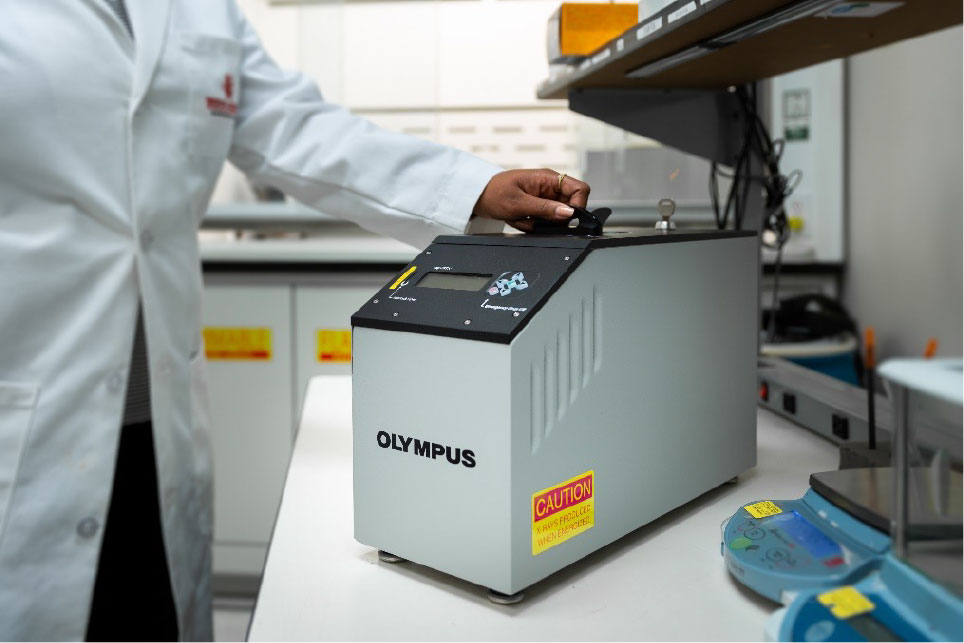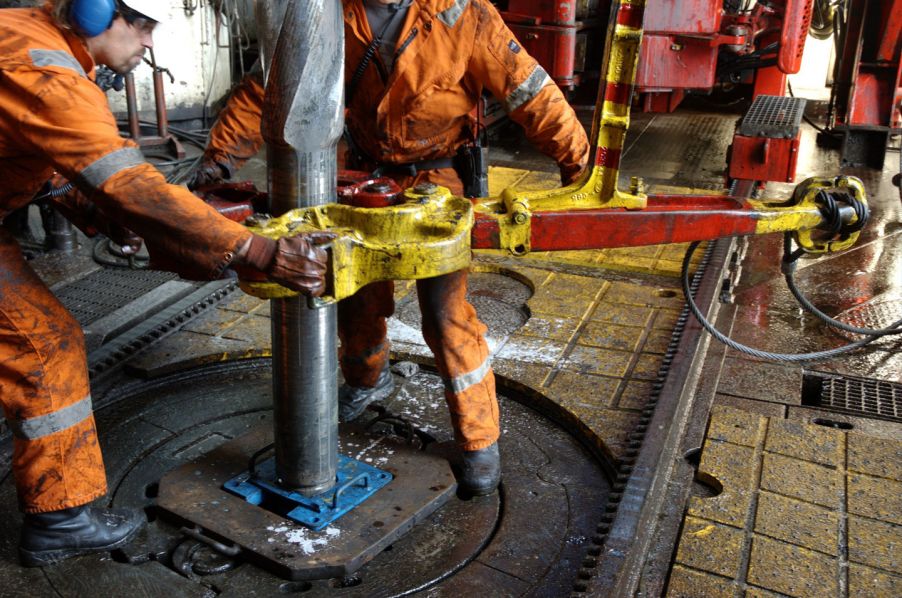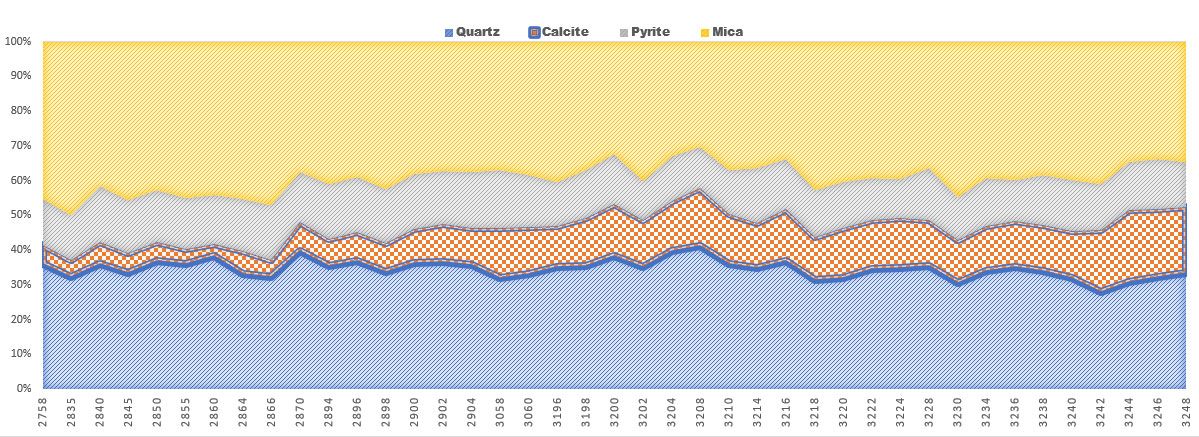Mud logging is the detailed recording (or well log) of geological conditions found in a borehole by studying the rock cuttings brought to the surface during drilling operations. The well log is used to inform the drilling and well construction processes for oil and gas exploration, mineral exploration, and other discovery projects. Analysis is performed either on-site to adjust the drilling direction in real time or after the well is drilled and the core samples are taken back to the lab.
For efficient on-site analysis, many mud logging technicians rely on portable X-ray diffraction (XRD) analyzers, or diffractometers. We recently spoke with a mud logging expert whose company uses our mobile benchtop BTX™ III XRD analyzer in its testing process.

The BTX III XRD analyzer is compact and lightweight.
Q: Tell us about your organization and your role in the mud logging process.
A: We provide services in the geological and technological research field and perform various related work. I am the head of the control-interpretation department. Our department’s main task is to process the information received from the well and prepare a final report with our conclusions for our customers. From time to time, I train employees.
Q: What kind of measuring equipment do you use in your mud logging work?
A: We have a fairly large range of equipment, from technological sensors installed directly on the rig to gas chromatographs and laboratory equipment, which are used to determine the density and porosity of carbonate sample cuttings and core samples. We’ve recently commissioned equipment for XRD, X-ray fluorescence (XRF), and total organic carbon (TOC) analyses.
Q: Why did you decide to purchase an XRD instrument to perform your analysis on-site?
A: Initially, we needed a portable XRD instrument to participate in a specific project, as it was required in the technical specifications.
Q: Before you acquired the BTX III XRD analyzer, did you use third-party services to obtain similar analyses?
A: Our customers transferred the cuttings and core samples prepared by us to a separate laboratory that carried out these types of analyses. But the problem lies in the significantly large time lag between sampling and obtaining the analysis results. It can take weeks.
Q: How much training is needed to operate the BTX III analyzer?
A: The Olympus BTX III analyzer turned out to be easy to use. When teaching people to work with the analyzer, it is enough to demonstrate the workflow once. After about 10 tests the employee can fully operate it independently. Learning and working with specialized software to interpret the XRD data can be challenging, but this doesn’t apply to the device itself. I learned quickly thanks to the Olympus employees who helped me through the first steps.
Q: What are the main benefits of using an X-ray diffractometer for mud logging?
A: We obtain an evaluation of the section that isn’t based on the opinion of a geologist who visually determines what kind of rock is in front of them and roughly evaluates what minerals it contains. A visual analysis approach is unreliable because the quality depends on that person’s experience, skills, and abilities. The analysis of a sample on a diffractometer is largely devoid of the human factor so it maintains the quality of the results at the same level, regardless of the person performing the analysis. Also, it gives a wider range of information, enabling you to make better conclusions, directly while drilling, with a minimum time delay.
Q: Can you provide an example of a time when using a diffractometer improved your evaluation efficiency and accuracy?
A: On one project, we carried out research where the rock samples taken from various members were almost visually indistinguishable from each other. They were close in composition and, due to the large amount of organic matter, had only a subtle difference in color. This greatly impeded the lithological dissection of the section, which involves determining the transition point from one member to another. Although the rocks looked very similar, the diffractometry results clearly showed the change in the composition of the rocks so we could identify the transition points.

Minerals vs Depth
Example XRD pattern for mud logging. Each line is a diffractogram of a mineral from a certain depth, making it easy to see the XRD pattern peaks and other changes.
Q: How many cuttings or core samples do you take on average for mud logging?
A: It depends on the needs of the customer. Basically, it is 400 samples if we are sampling with a step (or interval) of 4 meters and 800 samples if we are sampling with a step of 2 meters.
Q: Does having an on-site diffractometer offer a competitive advantage?
A: Now several colleagues are acquiring or have already acquired diffractometers. Perhaps this is a trend, and customers have come to understand that the old, complex way of research, which delivers poor-quality results in some cases, must be improved and correspond to the modern development of portable equipment.
Related Content
Webinar: XRD Mineralogy and XRF Analysis for Advanced Mud Logging
Video: Faster Mineralogy for the Field and Lab
Portable X-Ray Fluorescence Geological Logging with Vanta Analyzers
Get In Touch



.jpg?rev=9E61)